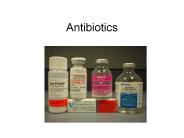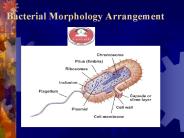Neisseria Meningitidis Bacterium PowerPoint PPT Presentations
All Time
Recommended
Title: Microarray data analysis Author: Marek Basler Last modified by: Marek Basler Created Date: 3/29/2005 10:16:48 AM Document presentation format
| PowerPoint PPT presentation | free to view
Invasive meningococcal disease (IMD) is a life-threatening condition caused by the bacterium Neisseria meningitidis (N. meningitidis), an encapsulated gram-negative diplococcus that is a pathogen exclusive to humans. N. meningitidis is carried harmlessly in the nasopharynx of approximately 5?11% of adults and up to 25% of adolescents. Life-threatening disease occurs when the bacterium invades body tissue, which most commonly manifests as meningitis or septicemia. The disease is transmitted via respiratory droplets, through close or prolonged contact with an infected individual. N. meningitidis is classified into 13 distinct serogroups; however, almost all invasive disease in humans is a result of infection with one of 6 serogroups.
| PowerPoint PPT presentation | free to download
Vaccines containing capsular polysaccharide as immunogen are directed against : Streptococcus pneumoniae Haemophilus influenzae Neisseria meningitidis Salmonella typhi.
| PowerPoint PPT presentation | free to view
Modest activity against Staphylococcus aureus Gram-negative bacteria Escherichia coli, Klebsiella pneumoniae, Proteus spp. Haemophilus influenzae, Neisseria spp.
| PowerPoint PPT presentation | free to download
The incubation period is variable, 2-10 days, but usually 3-4 days. Infectious Period: ... living in close quarters or dormitories (military recruits, ...
| PowerPoint PPT presentation | free to view
none
| PowerPoint PPT presentation | free to view
Powerful irreversible inhibitor of b-lactamases - suicide substrate ... Exists as a zwitterion and is soluble in water. Poorly absorbed through the gut wall ...
| PowerPoint PPT presentation | free to download
... Streptococcal pharyngitis. scarlet fever. rheumatic fever. necrotizing fasciitis 'flesh ... S. aureus: upper respiratory tract & 'typical' pneumonia ...
| PowerPoint PPT presentation | free to view
Institute for Microbiology, Medical Faculty of Masaryk University and St. Anna Faculty Hospital in Brno Agents of bloodstream infections Bloodstream infections less ...
| PowerPoint PPT presentation | free to download
Cefadroxil, cephalexin. Cefazolin. First-generation. Oral Agents. Parenteral ... include Cefazolin (parenteral) as well as cefadroxil and cephalexin (oral) ...
| PowerPoint PPT presentation | free to download
Chapter 27 Nervous System Infections Medgar Evers College Microbiology Prof. Santos
| PowerPoint PPT presentation | free to view
In many vancomycin-resistant strains of enterococci, the D-alanyl-D-alanine ... Thus, E. coli O157 (the Jack-in-the-Box and Stock Pavillion E. coli) is #157 of ...
| PowerPoint PPT presentation | free to download
NAG. NAG. NAM. NAM. NAM. NAG. NAG. NAM. NAM. NAM. NAG. NAG. Bond formation. inhibited by. penicillin. Cross linking ...
| PowerPoint PPT presentation | free to download
How Bacterial Pathogens Penetrate Host Defenses Although some pathogens can cause damage on the surface of tissues, most must penetrate tissues to cause disease.
| PowerPoint PPT presentation | free to view
Ultrastructure of bacterial cell. Form and Function. Structure of a Prokaryotic Cell Bacterial Morphology and Ultrastructure Only two types of cells are produced by ...
| PowerPoint PPT presentation | free to download
NAMA, N-acetyl-muramic acid; NAGA, N-acetyl-glucosamine. ... a new subunit of N-acetylmuramic acid (NAMA) and N-acetylglucosamine (NAGA) ...
| PowerPoint PPT presentation | free to download
higher case fatality rates (30-40%) for elderly persons and ... Philadelphia (122) 70 (37-86) Sims et al. 1988. Charlottesville (85) 81 (34-94) Farr et al. 1995 ...
| PowerPoint PPT presentation | free to view
Gram negative rods and cocci Endotoxin: Lipid A, the superantigen Part of LPS of the Gram negative outer membrane Causes an over-stimulation of macrophages with ...
| PowerPoint PPT presentation | free to download
Oryza sativa. 100. 100. 100. 96. 63. 64. 52. 83. 99. Pathogens. Anthrax ... Pathogenomics group: Ann Rose, Steven Jones, Ivan Wan, Hans Greberg, Yossef Av ...
| PowerPoint PPT presentation | free to view
for H. Flu ranges from 3%-5 ... H. Influnezae Serotyping - H. Flu Serotype b (Hib) Strep Pneumoniae Serotyping (Capsular) ...
| PowerPoint PPT presentation | free to view
Empiric Treatment: Pneumonia Overview of Pneumonia http://www.virtualrespiratorycentre.com/diseases.asp?did=38 Link Link Link Link What is pneumonia?
| PowerPoint PPT presentation | free to download
(PRICE LOWERED)Microbiology, Bacterial Pathogens
| PowerPoint PPT presentation | free to download
Prevention, Surveillance and Statistics of Resistance to Antibiotics Salma B. Galal, M.D. Ph.D. Prof. Public Health and Medical Sociology Former WHO technical officer
| PowerPoint PPT presentation | free to download
Chapter 22 Microbial Diseases of the Nervous System Fungal and Protozoan Diseases The Nervous System Bacterial Diseases Prion Diseases Viral Diseases
| PowerPoint PPT presentation | free to view
Bacterial meningitis Introduction Bacterial meningitis is an inflammation of the leptomenings, usually causing by bacterial infection. Bacterial meningitis may ...
| PowerPoint PPT presentation | free to view
Three distinct bacterial pathogens causing sexually transmitted infections ... The most common bacterial sexually transmitted infection, with 104,155 cases ...
| PowerPoint PPT presentation | free to view
Pathogenicity and Infection HIV Indirect ELISA animation http://www.biology.arizona.edu/immunology/activities/elisa/technique.html? Pathogenicity and Infection Non ...
| PowerPoint PPT presentation | free to view
Pathogenesis of bacteria Original and development of Bacterial Infection Infection the invasion of a host organism's bodily tissues by disease-causing organisms ...
| PowerPoint PPT presentation | free to view
... of a Pseudomonas aeruginosa transposon mutant disrupted in the ... 7 kb genetic element ... factor for human opportunistic pathogen Pseudomonas ...
| PowerPoint PPT presentation | free to view
Bacterial Sexually Transmitted Infections Patrick Kimmitt Notes: Rates of syphilis are nine times higher among men. * Tertiary syphilis 3 - 20 years after primary ...
| PowerPoint PPT presentation | free to view
Three distinct bacterial pathogens causing sexually transmitted infections ... NCSP aimed to screen at least 15% of sexually active 16-24 year olds. ...
| PowerPoint PPT presentation | free to view
She has a history of eczyma (on her cheeks and arms) and ... Fibrin deposition -shearing of RBC. Hemolytic anemia. Tiny blood clots -ischemia. Damage to bowel ...
| PowerPoint PPT presentation | free to view
b- Lactam Antibiotics Dr. Nawal Al-Musayeib Pharmacy College Pharmacognosy Dep. 2-3 x/ day 1 x/ day 3rd Generation Cephalsporines Has 2-aminothiazole gp. ??
| PowerPoint PPT presentation | free to view
Treatment of Intravascular Catheter-related Infections Treatment of Catheter Related Infections Intra-Abdominal Infections Causes of Intra-abdominal infections ...
| PowerPoint PPT presentation | free to download
All staphylococci are catalase positive. The genus Staphylococcus has at least 30 species. The three main species of clinical importance are: ...
| PowerPoint PPT presentation | free to view
Definitions Bacteremia: Presence of bacteria in the blood Under normal circumstances, the blood is a sterile environment ...
| PowerPoint PPT presentation | free to download
It was found that the tick was teeming with a new species of gram-negative ... Since the tick takes a blood meal, B. burgdoferi enters the bloodstream ...
| PowerPoint PPT presentation | free to view
'The second human genome project' (David Relman) ... Figure 1 Circular genome map showing the position and orientation of known genes, ...
| PowerPoint PPT presentation | free to view
Identify previously unrecognized mechanisms of microbial ... Dental caries Pneumonia. Diarrhea (E. coli etc.) Salmonellosis. Diphtheria Scarlet fever ...
| PowerPoint PPT presentation | free to view
... Candida spp., & other fungi cause the reminder of the infections. Lung Infections The most common nosocomial pathogens causing pneumonia are gram negative rods ...
| PowerPoint PPT presentation | free to view
The most common bacterial sexually transmitted infection, with 104,155 cases ... The more common type of infection associated with D to K is sexually transmitted: ...
| PowerPoint PPT presentation | free to view
Human Diseases Caused Primarily by Gram-Positive and Gram-Negative Bacteria: The Airborne Diseases Part I Airborne Diseases Diphtheria Diphtheria ...
| PowerPoint PPT presentation | free to view
... directly via lymphatic drainage or indirectly by causing ... Organism spreads from the nasal tissues and upper airway to the chest, throat, or middle ear ...
| PowerPoint PPT presentation | free to view
Bacterial Morphology Arrangement Robert Hooke (1635-1703) English Scientist First to use the microscope to observe cells Coined the term cell Anton van ...
| PowerPoint PPT presentation | free to download
Individuals with viral infections (e.g, cold sores) should wash their hands thoroughly. ... Cold Sores, Fever Blisters, Herpes labialis ...
| PowerPoint PPT presentation | free to view
Microbial invasion of the bloodstream can have seriously immediate sequences , ... that is a complication of a urinary trat infection, than those who do not have one. ...
| PowerPoint PPT presentation | free to view
... from: animal feces or blood, hot dogs, dairy, other causes meningitis, ... baby 50-80% at risk: 3rd trimester mothers & babies, elderly, AIDS patients ...
| PowerPoint PPT presentation | free to view
Chair of Microbiology, Virology, and Immunology GENETICS OF BACTERIA AND VIRUSES BASES OF BIOTECHNOLOGY AND GENE ENGENEERING
| PowerPoint PPT presentation | free to view
Spore- forming gram positive strict aerobic capsulated bacilli, 1x3-4 u size, ... hyaluronidase, staphylokinase, exotoxins, leukocidin, exfoliative toxin, toxic ...
| PowerPoint PPT presentation | free to view
Staphylococcus, Micrococcus & Similar Organisms. All are catalase positive gram positive cocci. However, only genus Staphylococcus is of primary clinical significance. ...
| PowerPoint PPT presentation | free to view
Gonorrhea. Females. vaginitis, urethritis, salpingitis (PID) mixed anaerobic abdominal infection ... Gonorrhea in Newborns. Infected as they pass through birth ...
| PowerPoint PPT presentation | free to view
... and subsequently activate as shingles. ... Shingles (herpes zoster) is characterized by a vesicular rash along the affected ... Shingles. Figure 21.10b ...
| PowerPoint PPT presentation | free to view
Title: Biology of Cancer Author: Ruth Pettengell Last modified by: tscott Created Date: 8/21/2006 7:47:35 PM Document presentation format: On-screen Show
| PowerPoint PPT presentation | free to view
... -forming units Identification of Bacteria Morphology Growth requirements Biochemistry Enzymes Antigens Non-cultural diagnostic methods ... Microbiology Textbook ...
| PowerPoint PPT presentation | free to view
MRSA (Methicillin resistant Staphylococcus aureus), TB (Mycobacterium ... biopsy and necropsy tissues. blood. secretions. excretions. ...
| PowerPoint PPT presentation | free to view
























































